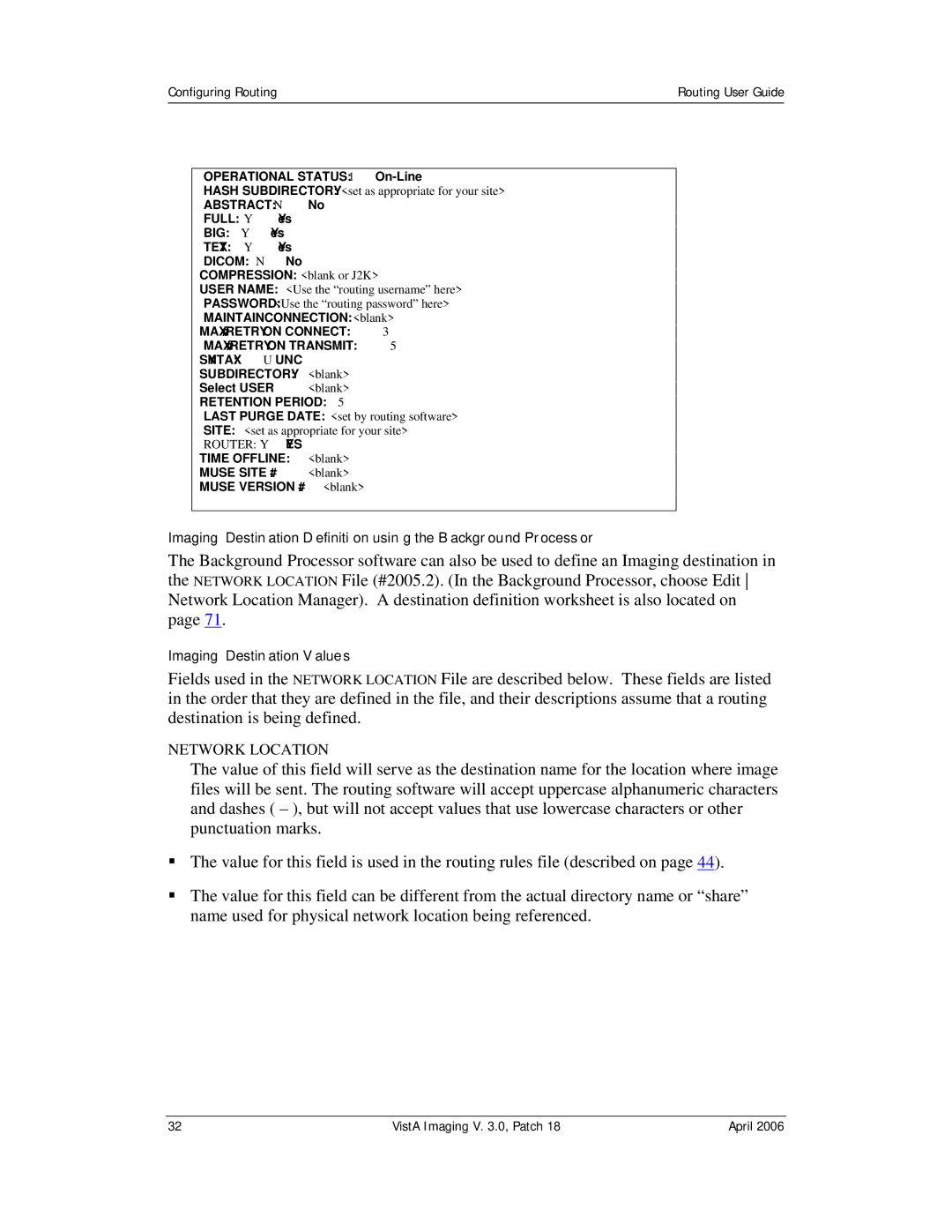
Configuring Routing | Routing User Guide |
|
|
OPERATIONAL STATUS: 1
HASH SUBDIRECTORY: <set as appropriate for your site>
ABSTRACT: N No
FULL: Y Yes
BIG: Y Yes
TEXT: Y Yes
DICOM: N No
COMPRESSION: <blank or J2K>
USER NAME: <Use the “routing username” here>
PASSWORD: <Use the “routing password” here>
MAINTAINCONNECTION: <blank>
MAX # RETRY ON CONNECT: 3
MAX # RETRY ON TRANSMIT: 5
SYNTAX: U UNC
SUBDIRECTORY: <blank>
Select USER <blank>
RETENTION PERIOD: 5
LAST PURGE DATE: <set by routing software>
SITE: <set as appropriate for your site>
ROUTER: Y YES
TIME OFFLINE: <blank>
MUSE SITE #: <blank>
MUSE VERSION #: <blank>
Imaging Destination Definition using the Background Processor
The Background Processor software can also be used to define an Imaging destination in the NETWORK LOCATION File (#2005.2). (In the Background Processor, choose Edit Network Location Manager). A destination definition worksheet is also located on page 71.
Imaging Destination Values
Fields used in the NETWORK LOCATION File are described below. These fields are listed in the order that they are defined in the file, and their descriptions assume that a routing destination is being defined.
NETWORK LOCATION
The value of this field will serve as the destination name for the location where image files will be sent. The routing software will accept uppercase alphanumeric characters and dashes ( – ), but will not accept values that use lowercase characters or other punctuation marks.
The value for this field is used in the routing rules file (described on page 44).
The value for this field can be different from the actual directory name or “share” name used for physical network location being referenced.
32 | VistA Imaging V. 3.0, Patch 18 | April 2006 |
